Buy HD e-Books & Text —— www.ccelian.com
the Art of Nao
Scrolls: 1 . 2a . 2b . 3 . 4 . 5 . 6 . 7 . 8 . 9 . 10 . 11 . 12 . 13 . 14 . 15 . 16 . 17 .
18 . 19 . 20 . 21 . 22 . 23 . 24 . 25 . 26 . 27 . 28 . 29 . 30 . 31 . 32 . 33 . 34 .
< Scroll 7 ___________________________________________________ Scroll 9 >
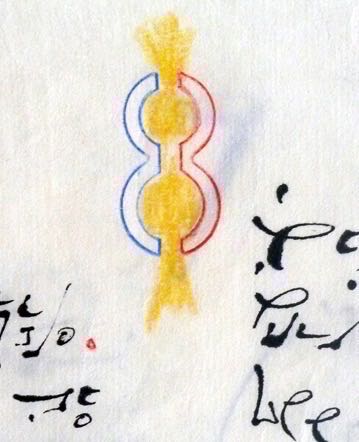
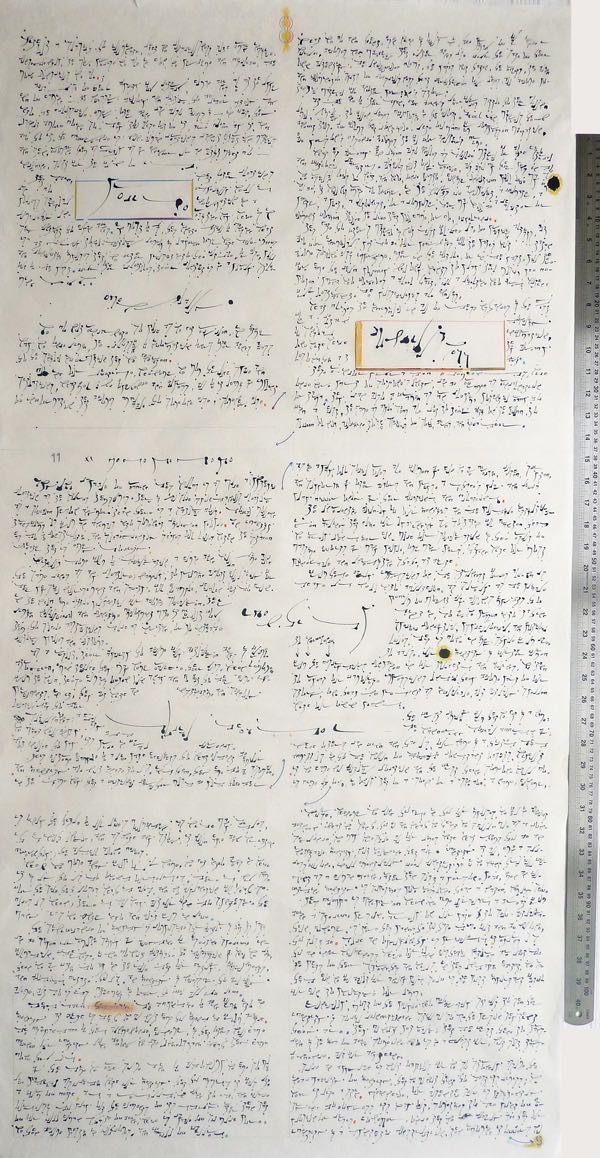
________________ Scroll 8 . 67 x 135 cm / 26 x 53 inches _____________
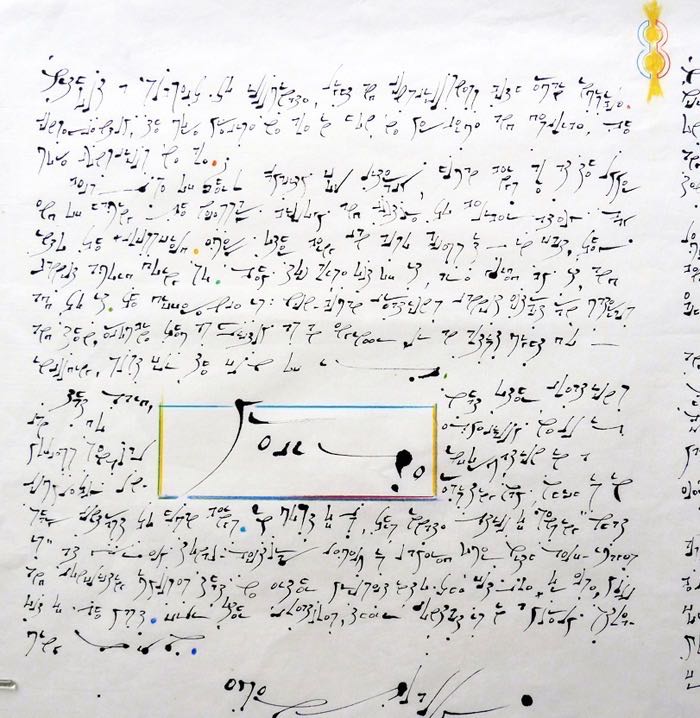
Scroll 8-section 1.1
Without a subject to illuminate, light and consciousness both remain invisible. Consequently, the more precise we are in how we perceive and describe, the more conscious we are.
Because of their capacity for literacy, human beings are at the upper end of having the necessary biology and culture to deliberately tap into the +crossfield. Every other being can also access it—in fact, they cannot avoid doing so. They too arise out of it, are guided by it, and add to it. The difference is: non-human creations cannot extract raw materials and then, recombine them as quickly as an engineer or an artist might do—including, just for the fun of it.
That said, what other creations can do especially well is process sensual information in a completely unresisting way, which is in sharp contrast to human beings. In most of us, this innate skill of sensing “what is” at purely tonal-textural levels that either we project into the future or else, pull out of the past. For other creatures, their contact is purely in a streaming now.
_________________

Scroll 8-section 1.2
Eventually
We do not reincarnate so much as we get recycled. In whatever way we once lived, the +crossfield of information offers other beings access to the sensual information that we generated.
During our lifetime, whenever we move through spaces and situations, whatever we experience and express, all of it leaves an imprint of information that becomes available to someone else, somewhere else.
________________________
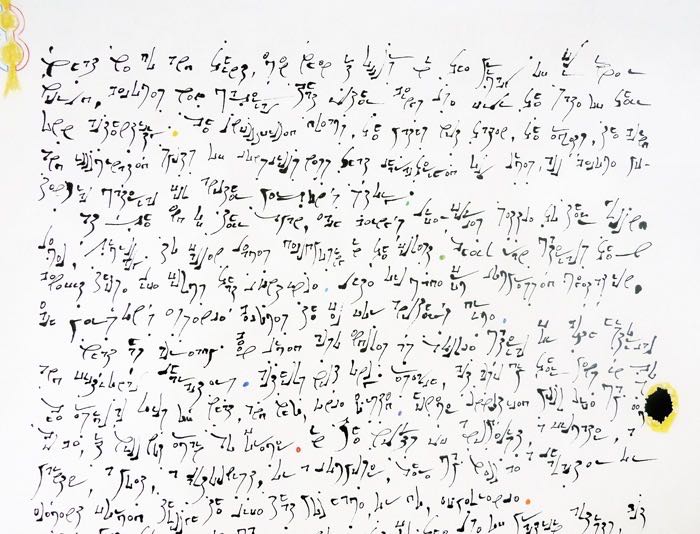
Scroll 8-section 2.1
What we do and think, even when it occurs in the privacy of our inner world, becomes new material that other beings use for the sake of their own authenticity. The unfulfilled dreams, the paths not taken, the regrets, the blind and the illuminated spots of consciousness that characterized our lives, all become potential material for another person's story.
At the end of their span, each being’s life-forces settle to their ground level, similarly to fallen leaves decomposing in the forest. Their raw materials then benefit those life forms that continue. Like oil made from compressed vegetation, each person’s essence becomes the fuel for another’s drive.
What has already been lived also endures as source material for both historical and fictional characters. Authors not only research, but also dip their pens into the residual oils of what, and who, once existed. However unnoticed your life may seem to be, it will not remain so forever. In the works of a novelist, a filmmaker, a painter, a poet, a cartoonist, or a composer, there may well be a character or element formed through the life that you have, or do, experience.
__________________
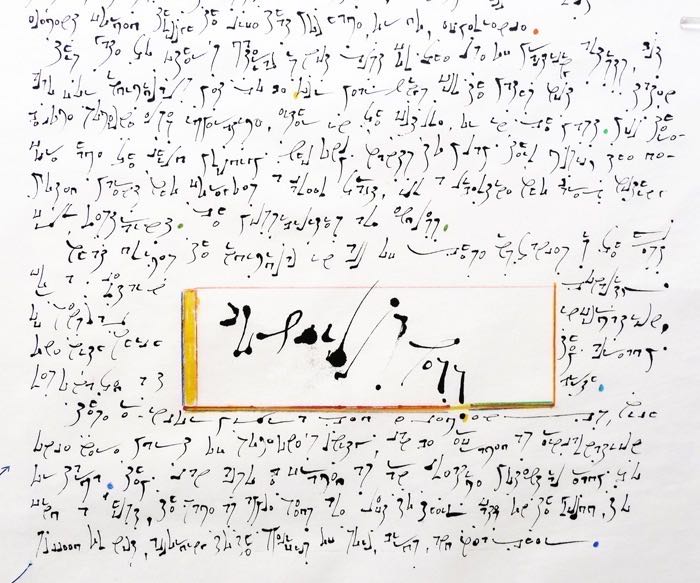
Scroll 8-section 2.2
This gate to other’s material is not just for the use of practicing artists, but also for individuals yet to be. Our yearning for the paths not taken become someone else's imperative, either in the future, or in the past. You therefore have the child prodigy who only wants to play their music, the devoted parent who foregoes a career track, or a libertine who cares nothing for self-restraint. The possibilities are endless.
What drives the individual in all of these instances is the quest for a certain tonality of sensual information, one with which they already resonated at birth.
These re-incorporated elements, which were once a part of someone’s unity, can be reframed as reincarnation or as karma. They can also be framed as raw creative potential ready to find a host, the same as apple seeds are left to their fates on the ground, to succeed or not, according to the specifics of soil, birds, and weather.
____________________

Scroll 8-section 3.1
11 Me Me Me Me Me
Anyone capable of reading these words is as much a synthetic creation as the words themselves. There is no such spontaneous creature as a socialized person anymore than there is a natural book. Social moulding transforms us from raw animals into somewhat civilized people. An identity has to be constructed, and subsequently shapes our roles within the staged theater that is every society.
Without some form of socialization, a human being would live along the same lines as any creature; namely, to provide almost exclusively for their physical nourishment and safety. For example, children left to grow in the wild have little potential for becoming socialized. Their limited neurological and cognitive development make it difficult for them to juggle abstractions such as writing, or to integrate cultural values and customs.
__________________

Scroll 8-section 3.2
As a result, their capacity to become fully actualized human beings is forever atrophied, even though they may never realize their loss. When removed from the wild, these humans often run away and go back to their "home" environments. In it, they act with an instinctive and sensory relationship to their surroundings; a quality that we might well envy, but not enough to pay its price in feral currency.
This extreme example of a life path highlights to what extent behaviour and identity are not innate to us. Instead, they have to be assembled in the same way that a fictional character must be put together.
_________________
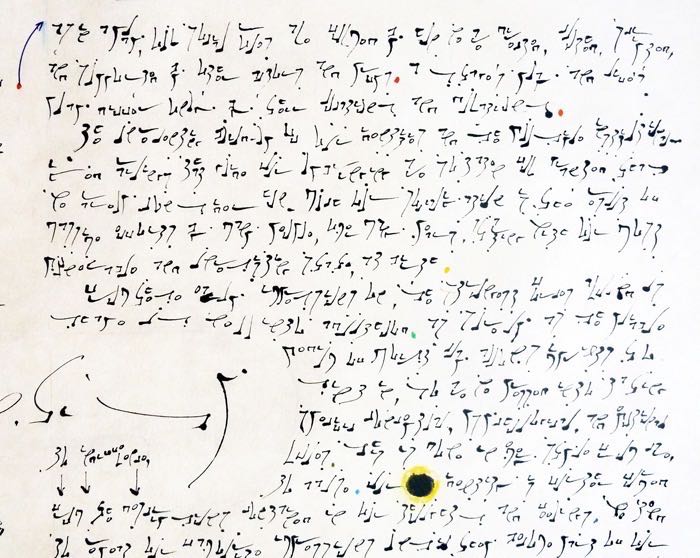
Scroll 8-section 4.1
As in a play, our social roles are formed by how we are directed, clothed, scripted, and supported by other actors and props. A stage’s play and life's play differ only in their locations and durations.
The unrelenting build-up of our identities and the multiple institutionalized railings that guide our upbringing are so taken for granted that we rarely consider how much our socialization is the result of massive efforts by many people, over many years, starting with our most vulnerable and unresisting state, at birth.
From these early impressions on, the strongest forces around us shape us well into adulthood. As surely as the pliable medium of moist clay allows imprints to sink in, so are we pressed into taking specific conceptual, psychological, and emotional roles. This is done in every style from care, to indifference, to abuse. Our identity is further formed from the descriptions contained in our thoughts and feelings.
____________________

Scroll 8- section 4.2
We tend to repeat our favourite impressions until they become part of our story, one that we present as inflexible, but actually spelled with our own pens.
The first civilized form that we get is a name: the wandering social address by which others can find us. Our name is a ticket that admits us into the world of constant objects. Without it, we have no cultural location and the first thing someone will do is give us one, if only that of a “John” or a “Jane Doe.” A name, however, >
________________________

Scroll 8-section 5
> is only the title of our life’s documentary. As with many titles, it is not unique, and as with any story, it could have been written differently; the author alone decides.
When we move away from our name, we get into areas in which it is up to us to orient ourselves. There is no name for the self that loves what it does, and no explanation for what seduces us when; there is no way but our own to synthesize the many "I"s we enter into and exit from in life.
The significance of identity's composite structure is that its parts can be shaped or removed simply by accepting or rejecting specific information. Otherwise, if we do not cultivate the information by which we live, then we are fated to act in the role that our history, environments, and cultures dictate to us. An identity is necessary in order to feel fully alive, but so is its detachment in order to feel all of life.
That said: the advantage of being formed into an identity at birth is that we do not have to invent it from scratch. The disadvantage of this convenience, however, is that others will have defined our identity long before we can ever understand what they have done to us.
By the time we reach some kind of autonomy, we have so much life material associated with our identity that to dismiss it feels like a form of death. As a result, we cling to it, and force ourselves to play out the elements of its story rather than that of our full human state of being, which is capable of so much more. We then become vested in outcomes, and fearful of failures.
______________________
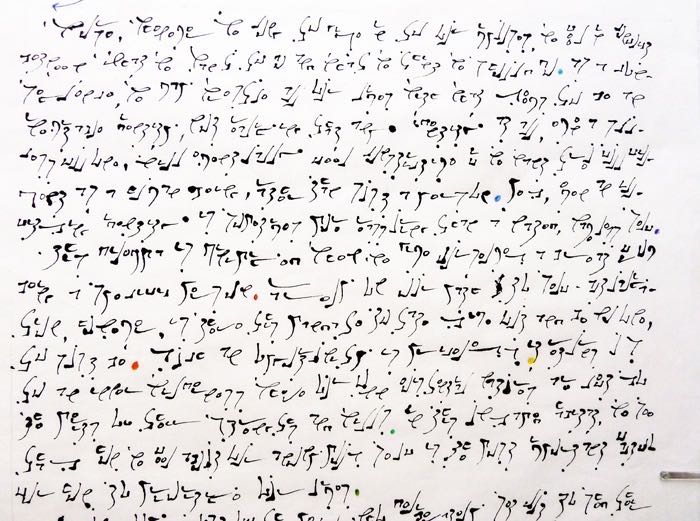
Scroll 8-section 6.1
Worse, whenever we long to give in to our impulses we feel in conflict between what we want to do, and what we think we should do. As a consequence, we may wrestle for all our lives with what seems to be an inevitable identity, not realizing that any identity at all, even a successful one, will eventually feel constrictive if we want true fulfillment as a human being, rather than just a person. Yet, even an ill-fitting identity is sometimes more reassuring than a naked, nameless self.
This dilemma is minimized when we give ourselves a break from being a specific person. Rarely on our path to self-actualization, however, is there this mandate to take time out and be no one, to just be. Such an opportunity however, is priceless. It returns us to an inner wilderness where our existential natures are left to the merits of their strengths and wills. In this untamed habitat, we see that how we feel about our anonymous self is the most important factor for how to prioritize our lives.
___________________

Scroll 8-section 6.2 — End of Scroll 8
Ironically, most of the people who deliberately set out to shed their identity’s social conditioning still do so as the person they think they are. They do not yet realize that the first thing to transcend is the idea of being someone who is in a quest for, not just transcendence, but for anything.
Such an approach is not obvious for we so strongly assume the inescapability of identity, that we do not think to test its limits; we wear it like a skin. Meanwhile, our authentic self is persistently trying to express its way out, sometimes to the point of explosion and crisis. However, once we clearly see that our identity is a synthetic construction then, removing it offers no >
< Scroll 7 ____________________________________________________ Scroll 9 >
Scrolls: 1 . 2a . 2b . 3 . 4 . 5 . 6 . 7 . 8 . 9 . 10 . 11 . 12 . 13 . 14 . 15 . 16 . 17 .
18 . 19 . 20 . 21 . 22 . 23 . 24 . 25 . 26 . 27 . 28 . 29 . 30 . 31 . 32 . 33 . 34 .
Buy HD e-Books & Text —— www.ccelian.com
© C.C. Elian 2010 - 2016